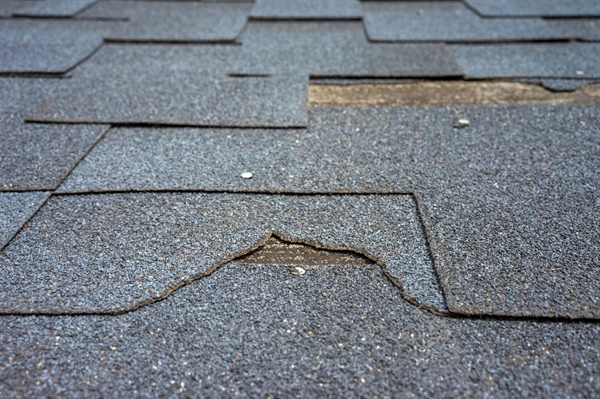How Wind Damage Impacts Your Roof: Prevention & Repair Tips

Strong winds can wreak havoc on roofs, causing visible and hidden damage that can compromise a home's structural integrity. From shingles being torn off to subtle cracks forming, wind damage often goes unnoticed until it escalates into a significant issue.
Homeowners in regions prone to high winds must understand how these forces affect roofs to prevent long-term problems. Whether it's a minor storm or a severe hurricane, knowing the impacts of wind damage is essential to maintaining the durability of your roof.
In this article, we’ll explore key aspects of wind damage and the immediate steps you should take after experiencing wind damage. With expert insights, you’ll understand how to protect your roof and maintain its longevity.
Learn more about roof wind damage repair and how Pudas Construction can assist with maintaining a robust and resilient roof.
What Wind Speeds Cause Roof Damage?
Wind damage to roofs begins at speeds as low as 45 mph, especially if the roof has pre-existing vulnerabilities such as aging shingles or loose flashing.
Roofs are at higher risk at 60 mph and above, with shingles torn off and underlying structures exposed. Severe storms or hurricanes with winds exceeding 100 mph can result in catastrophic damage, including structural failure.
Wind speed is not the sole factor; direction and duration also play crucial roles. Sudden gusts can dislodge materials even at moderate speeds, while prolonged exposure to strong winds exacerbates wear and tear.
To mitigate risks, homeowners should monitor weather conditions and inspect roofs after storms.
To protect against wind-related damage, proper installation, regular maintenance, and durable roofing materials are critical.
How Do Roof Shingles Respond to High Winds?
Shingles are designed to withstand certain wind speeds, but prolonged exposure or extreme conditions can compromise their integrity.
Shingles may lift at the edges in high winds, breaking their adhesive seal and allowing water infiltration. Over time, this can weaken the roof’s underlayment and lead to leaks.
Some shingles, such as architectural or impact-resistant types, are more durable and perform better under wind stress than standard three-tab shingles. However, even high-quality materials can fail if improperly installed or maintained.
Investing in high-wind-rated shingles and professional installation minimizes damage during severe storms.
How to Identify Wind Damage from Ground Level
Spotting wind damage from the ground involves looking for specific indicators such as missing shingles, debris in gutters, and visible cracks along the roofline.
Displaced flashing or loose materials near vents and chimneys also signal potential damage. These signs often appear after high winds and should be addressed immediately.
Another common indicator is sagging gutters or downspouts clogged with shingle granules. These granules often come loose during windstorms and collect at low points.
Inspecting the perimeter of your property for fallen materials can also help identify problems without climbing onto the roof.
For a professional evaluation, companies like Pudas Construction offer detailed inspections to ensure no damage is overlooked. Timely identification helps prevent further deterioration and costly repairs.
Vulnerable Areas of a Roof During High Winds
Edges and corners are the most susceptible to wind damage, as these areas bear the brunt of uplift forces during storms.
Poorly secured edges can allow wind to penetrate beneath shingles, leading to peeling and eventual detachment. Ridgelines and areas around chimneys and vents are also at heightened risk due to their exposure.
Roof valleys, where water runoff converges, are another weak point. These areas often experience additional stress during storms, making them prone to leaks and water damage. Properly sealing and reinforcing these areas can significantly enhance a roof's resilience.
Regular storm damage inspections and reinforcement of these vulnerable zones can help prevent wind-related damage and extend the lifespan of your roof.
What Should Homeowners Do Immediately After Wind Damage?
After experiencing wind damage, safety is the top priority. Begin by visually inspecting your property for hazards such as fallen power lines or debris. Avoid climbing onto the roof, as it may be unstable. Document visible damage with photographs for insurance purposes.
Contact a roofing professional promptly to assess the extent of the damage. Timely repairs can prevent minor issues from escalating into costly problems. Cover any exposed areas with tarps to prevent further water infiltration while waiting for repairs.
Pudas Construction provides emergency response services to address wind damage swiftly and effectively.
Call Pudas If You Suspect Wind Damage to Your Roof
Wind damage can seriously affect your roof, but proactive measures and timely repairs can minimize risks and extend its lifespan.
From understanding wind speeds to recognizing signs of damage, homeowners play a critical role in protecting their property. If high winds have impacted your roof, trust the expertise of Pudas Construction for prompt and professional solutions.
Contact us online today or call 612-481-3053 to safeguard your home from further damage or to Get a Free Estimate.